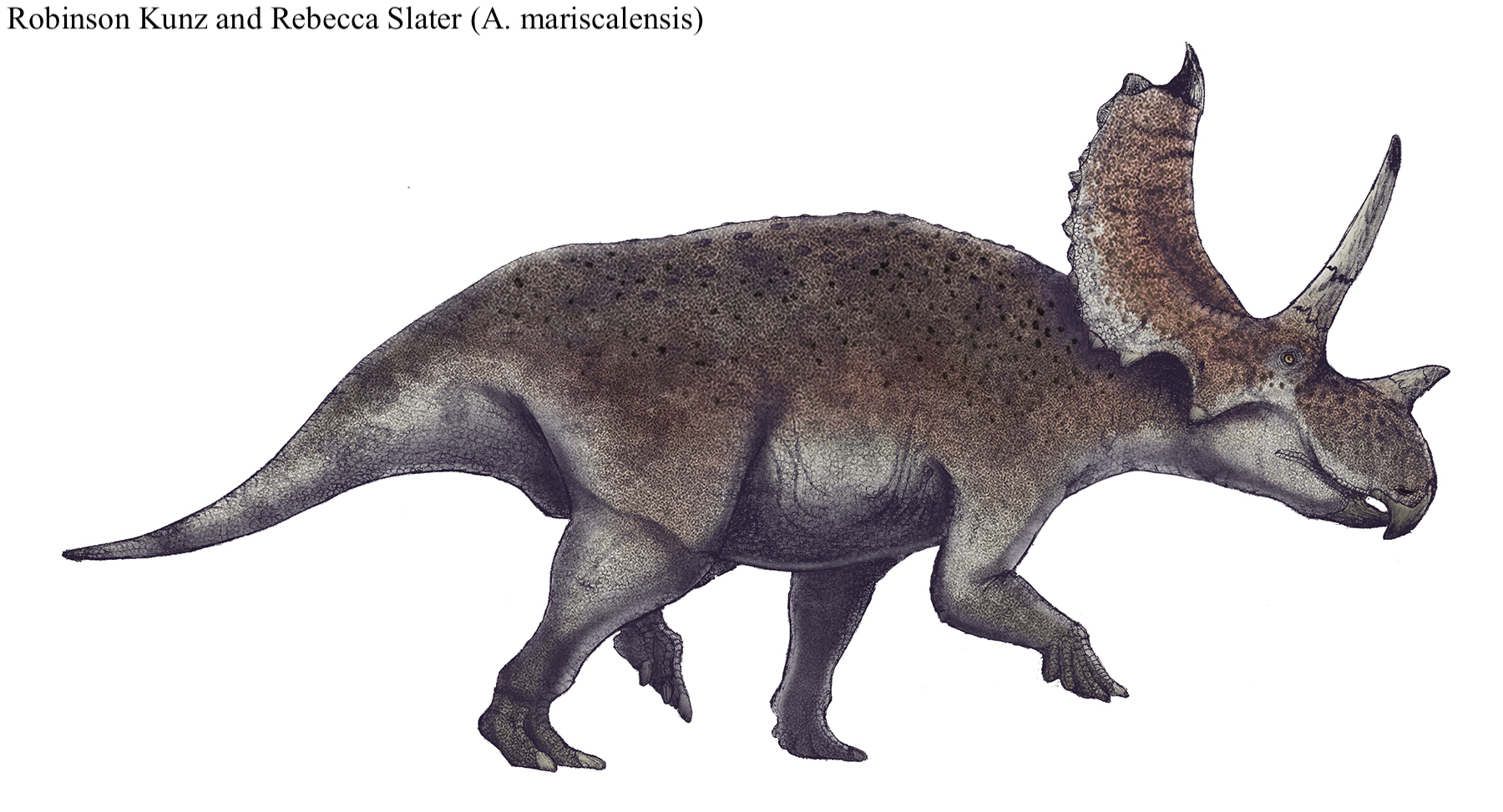Welcome to Agujaceratops

Name Definition
Horned face from Aguja
Name Given By
Agujaceratops name/Spencer G. Lucas, Robert M. Sullivan and Adrian Hunt in 2006 ; A. mariscalensis/Lehman, 1989 ; A. mavericus/Lehman et al. in 2016
Location
Aguja Formation in western Texas, U.S
Classification
Dinosauria, Ornithischia, Marginocephalia, Ceratopsidae, Chasmosaurinae
Size
2 meters tall (brow horns and crest adds an extra meter), around 6 meters long, roughly 2 tons
Temporal Range
Campanian stage of late Cretaceous, ~77 million years ago
Ecological niche
social herbivore with size and horns as defense
Species/Sub Species
A. mariscalensis (type species), A. mavericus
Diet
Agujaceratops probably was a browser but would have also consumed shrubs
Introduction
Agujaceratops is a genus of chasmosaurine ceratopsians that lived in North America during the late Cretaceous. Agujaceratops was initially classified as a new species of Chasmosaurus, another famous late Cretaceous ceratopsian. However, an analysis done by Lucas, Sullivan, and Hunt in 2006 of the partial skull in the holotype specimen showed some morphological differences between Agujaceratops and Chasmosaurus. Because of this, the holotype specimen was given a new genus, Agujaceratops, named after the formation it was discovered in, although the species name mariscalensis was still kept for the type species according to scientific naming policies. Agujaceratops means “Horned face from Aguja” since there is Aguja in the name, and the "ceratops" portion is frequently used in the generic names of large ceratopsians, which means horned face. The specific name, mariscalensis, means in English “from Mariscal”. Besides the partial skull holotype, more remains have since been attributed to Agujaceratops. Agujaceratops is easily differentiated by other ceratopsians by the brow horn shapes. These brow horns, instead of curving forward, are more vertical in shape and curve a bit backwards instead, though the snout horn also curves forward, but not to the same extent as a centrosaurine like Einiosaurus, though Agujaceratops mariscalensis has a shorter pair of brow horns and frill than A. mavericus. At the time when Agujaceratops lived, the Aguja Formation was around the western border of the Western Interior Seaway. While it wasn’t entirely submerged, the area where Agujaceratops would have lived was most likely to have been a swampy environment, while most of North America was submerged underwater that time because of the Western Interior Seaway. Agujaceratops lived with paleofauna that is usually found in North America like hadrosaurs, ankylosaurs, other ceratopsians, a large number of maniraptorans including dromaeosaurs and the caenagnathid Leptorhynchos, an indeterminate tyrannosaur, however, the apex predator there would have probably been Deinosuchus, better known as the terrible crocodile. This alligatoroid was so strong it has a good reputation of even overpowering tyrannosaurs, let alone a ceratopsid, which would usually be the main apex predator of the ecosystem during the Cretaceous since tyrannosaurids were usually the late Cretaceous apex predators.